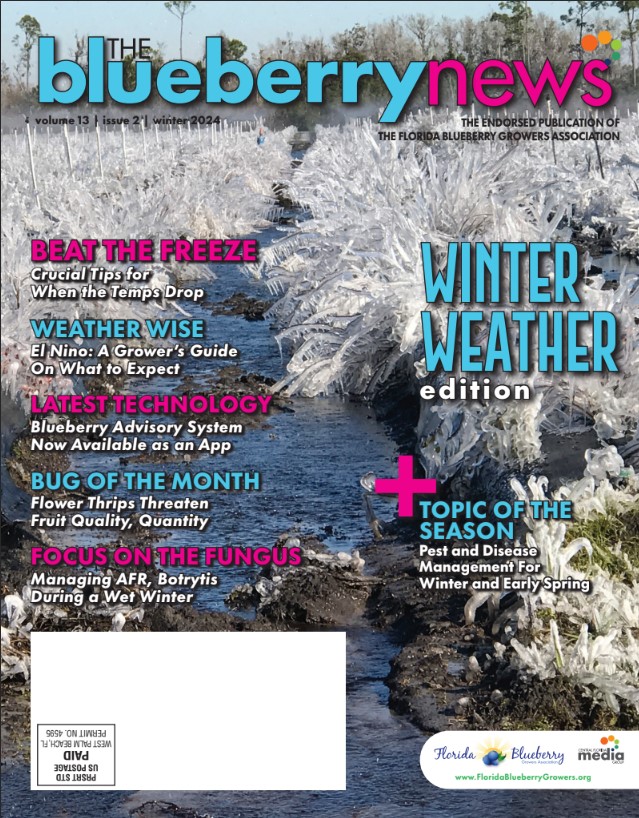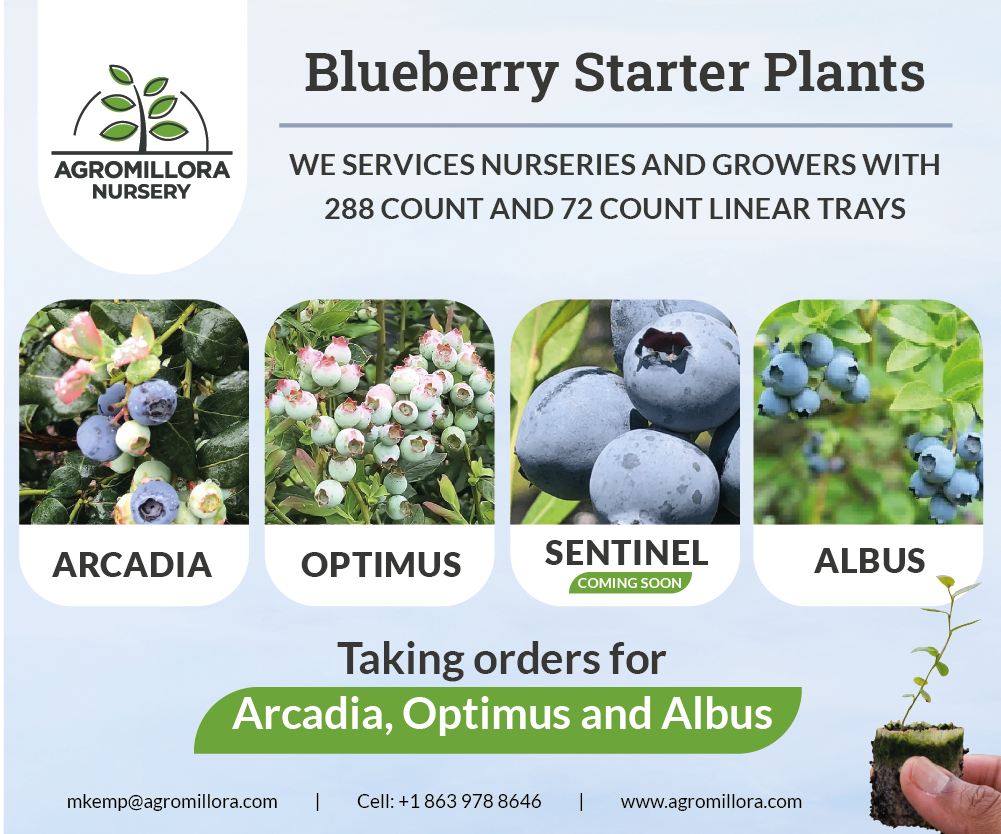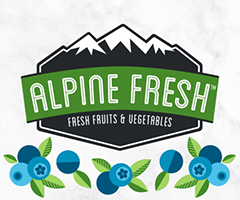Fungal leaf diseases can be a problem for Florida blueberry growers during summer months, including anthracnose, Phyllosticta leaf spot, rust, and target spot. This post is a quick reference guide to identifying these diseases from the symptoms (although some of these diseases can have symptoms that appear to be similar) and suggested chemical controls. Additional information on leaf diseases can be found in UF EDIS Publication PP348, Florida Blueberry Leaf Disease Guide (https://edis.ifas.ufl.edu/publication/PP348).
Anthracnose
This disease is commonly observed after harvest in Florida and continues through the summer. Symptoms are circular to irregularly-shaped lesions, usually at the edges of leaves, expanding from ¼ inch to greater than ¾ inch in diameter. The centers of lesions are necrotic and can be brown to dark-brown, with bull’s eye patterns sometimes present (Figure 1).
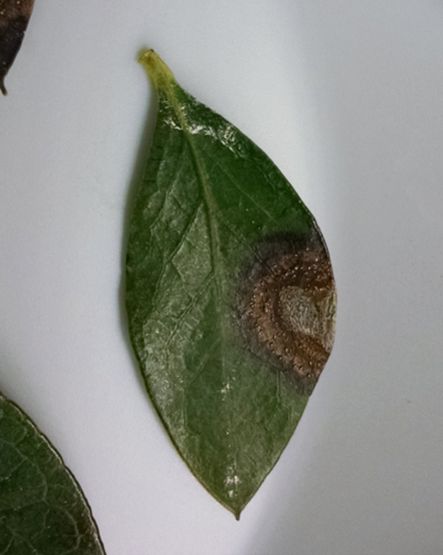
Figure 1. Anthracnose leaf spot lesion.
Credits: P. Harmon
There are several fungicides labeled for anthracnose on blueberry in Florida, including DMI fungicides such as IndarTM, OrbitTM, QuashTM, Quilt XcelTM and ProlineTM. These can be used in rotation or in tank mixtures with compatible products from another group to help prevent fungicide resistance, including Luna TranquilityTM, AboundTM, PristineTM, SwitchTM, and captan. Single applications of BravoTM can also be used after harvest. Applications work best before symptoms become severe. On susceptible varieties, applications to manage foliage health through flower bud differentiation should begin after post-harvest pruning, with reapplications according to label instructions through September. Anthracnose resistance to AboundTM has been confirmed in central Florida, so it should be tank-mixed with another fungicide like a captan product.
Phyllosticta
Phyllosticta leaf spot is more common later in the summer than anthracnose (August-September). Symptoms are brown leaf spots with irregular borders, surrounded by a purple or dark brown margin, and size ranging from small (less than 1/8 inch) to larger than one inch (Figure 2). A characteristic feature is the presence of tiny black fungal pimples within the lesions, although other fungi can have similar structures.
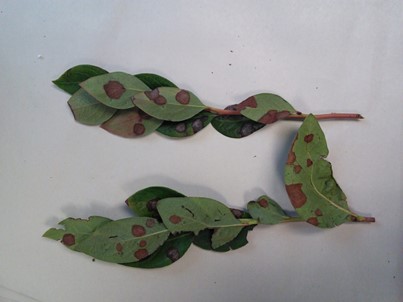
Figure 2. Phyllosticta leaf spot symptoms.
Credits: P. Harmon
There are no published fungicide recommendations for the management of Phyllosticta leaf spot management on blueberry, although in other crops related diseases are managed with applications of the contact fungicide BravoTM. Applications are suggested after harvest and approximately every two weeks thereafter (up to 6 weeks) within label instructions.
Rust
New rust leaf infections can begin in spring during or just after harvest, and disease activity increases again in early fall. Symptoms are typically observed first on upper leaf surfaces as small, somewhat angular yellow to reddish brown spots that may turn black over time before defoliation occurs. Yellow and orange spores are produced on the underside of leaves opposite the lesions on the surface (Figure 3).
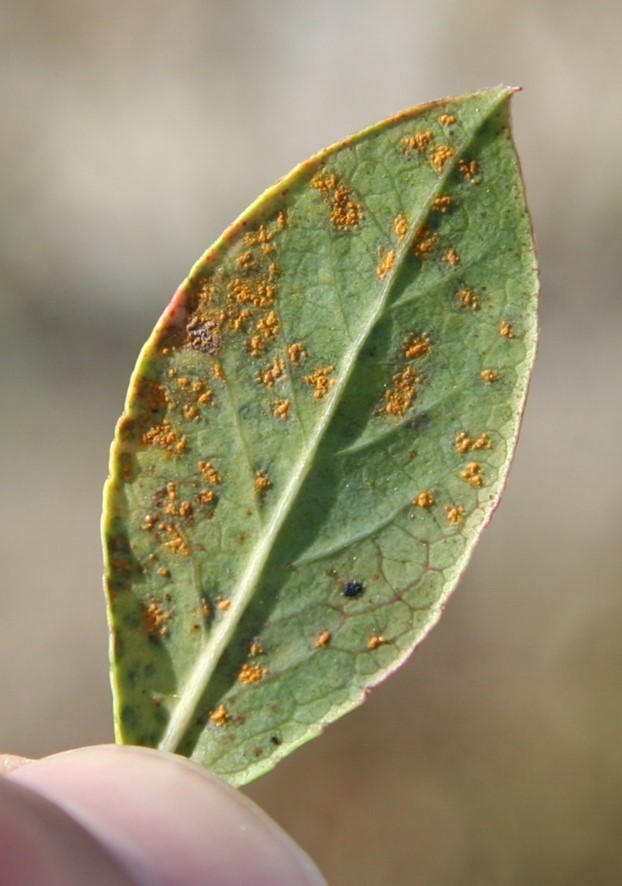
Figure 3. Rust reproductive spores on the leaf underside.
Credits: P. Harmon
Application ofsystemic fungicides are the best method of control. Fungicides do a better job protecting against new infections than treating existing ones, so repeated applications to maintain a protective residue on the leaves is key to preventing the disease. Effective fungicides include OrbitTM, IndarTM, QuashTM, ProlineTM, PristineTM, and BravoTMwith ProlineTM standing out in some research as excellent. For deciduous production, begin applications after harvest and continue through late October on susceptible varieties. Evergreen production in south Florida should focus applications when rust activity picks up in early fall and continue through harvest. Fungicides with different modes of action should be used in rotation or in a tank mix.
Target Spot
Target Spot can be observed during summer and early fall when high humidity, temperatures between 79°F - 84°F, and moderate rainfall favor abundant fungal sporulation and rapid development of disease. Symptoms are angular to irregular, reddish-brown lesions, 1/3 to 3/8-inch in diameter, with color varying in concentric rings, resulting in a “target” or bull’s-eye pattern (Figure 4). Symptoms can be similar to early symptoms of anthracnose leaf spot, and both diseases can occur on susceptible varieties at the same time. However, target spot lesions typically remain smaller, and fewer target spot lesions are required before defoliation occurs compared to anthracnose.
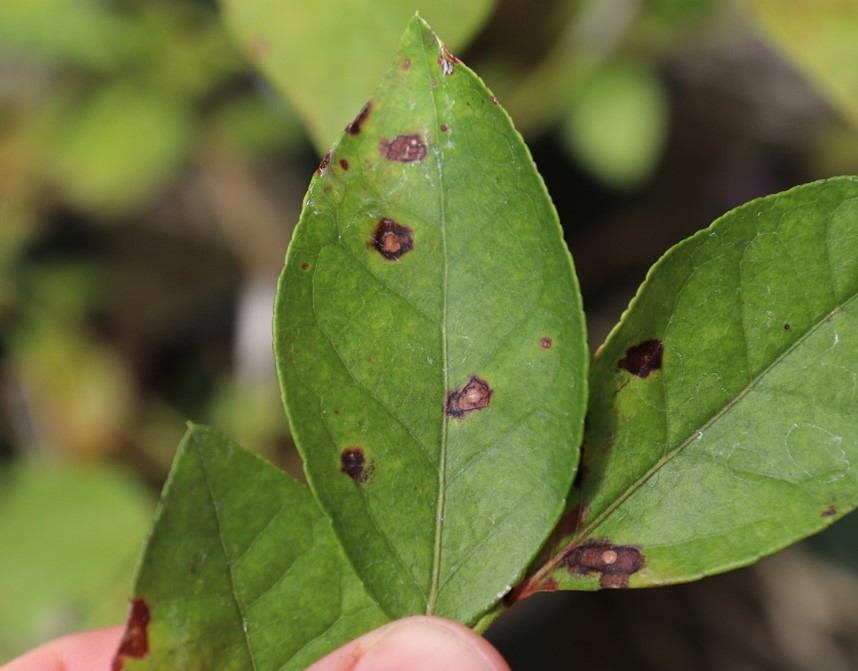
Figure 4. Target spot symptoms.
Credits: P. Harmon
Preventative fungicide applications where the disease is known to be present or careful scouting for initial disease symptoms are encouraged. No fungicide resistance is known at this time, and most fungicides that are used to manage anthracnose and rust should be effective against target spot. Chlorothalonil (Bravo and other products) specifically has a very broad-spectrum of fungal activity and is used to manage target spot effectively in other crops. Blueberry cultivars vary in their susceptibility to target spot and ongoing research will provide additional information. Growers should ensure good, even coverage and canopy penetration with spray equipment to increase the efficacy of the fungicide products they apply.
Dr. Phil Harmon, Professor, Plant Pathology, UF/IFAS
Doug Phillips, Blueberry Extension Coordinator, UF/IFAS

